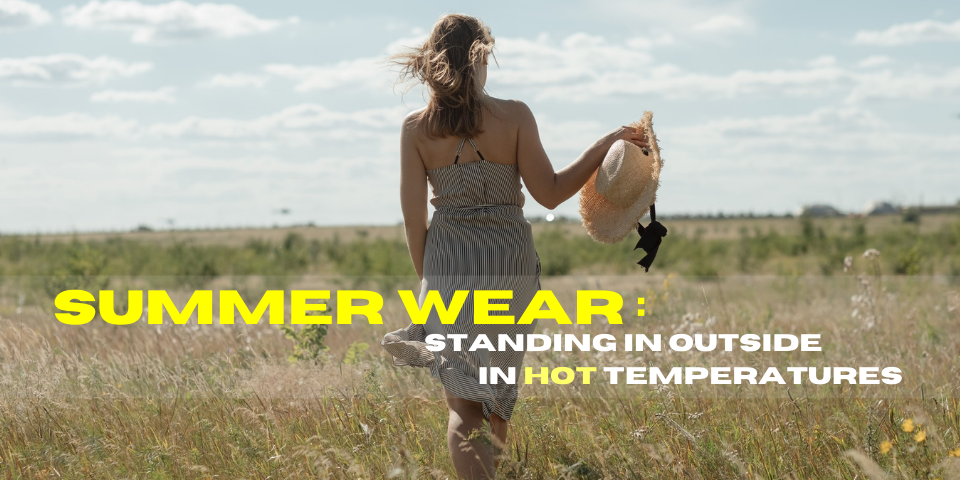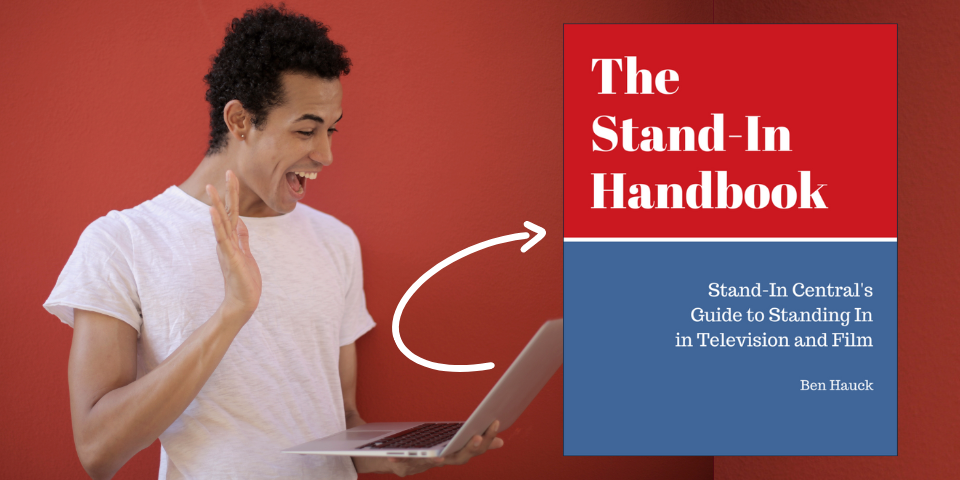Summer is starting soon, but qualitatively, summer has arrived for most of us. And with the world getting hotter, so are TV and film sets when you work outside this time of year as a stand-in. During summer, the days are on the longer side, meaning you may be exposed to sun, heat, and humidity for long stretches of time.
What is a stand-in to do? Here are some tips on keeping cool during the summer months standing in outside on TV and film sets.
Find out Where You’re Shooting
Not sure where you will be working? At your booking, ask casting for details so you can best prepare for any weather you might be facing.
If you’ve been working on a production regularly, the prelim or callsheet will have location details as well. These documents will also have the weather forecast for the day, though the details may be too general to make good choices in terms of what to wear to be fully prepared for the weather.
Check the Weather Forecast
Before you head out for your calltime (or maybe the night before!), make sure to check the weather forecast for where you will be shooting.
Obviously, you can do this in a number of ways:
- watching the news
- looking up the weather online
- consulting a detailed weather app like The Weather Channel App
- etc.
If you go with The Weather Channel App, it provides tons of details helpful for a stand-in. You can punch in the city or zip code of the location where you are shooting, and you will get forecasted temperature and weather per hour, many hours into the future. This will help you understand how well to prepare yourself for possible sun exposure, whether to bring rain gear, or whether you’ll want to bring a change of clothes in case of soupy humidity. You can also determine the sunrise and sunset with the app (good to know if your shoot is daylight-dependent, for judging wrap time).
Don’t forget that the night weather may also be something to know. Although sometimes heat will persist when the sun is down, other times and in other places when the sun goes down, so do temperatures. You might be sweating by day, then shivering by night if you’re not prepared!
Tops
When choosing a top to wear on a summer stand-in job, to keep cool, aim for lightweight materials that are loose and breathable.
T-shirts and tank tops are acceptable on many sets, though keep in mind the subject matter of your production. If you are working on a costume drama, it might not be appropriate to stand in wearing a tank top.
Of course, you may want a completely different strategy than a t-shirt or tank top if you are working in the woods or some other kind of environment where bugs or safety may be an issue. Long-sleeved shirts may be more appropriate in the woods or in grassy areas. There, ticks sometimes can be a problem, as can allergenic plants like poison ivy and poison oak.
Colorwise, lighter colors may make sense to reflect light and keep you cool and blacks may not make sense because they absorb heat. But again, keep in mind the production. In general, avoid white unless your actor is in white in the scene — white tends to be too bright on most sets.
You may want to avoid wearing tops that are very loose. A production may require you to wear color cover, which typically is worn over your clothes rather than changed into. A very loose shirt may feel uncomfortable underneath a more form-fitting color-cover top.
Bottoms
When choosing bottoms to wear on a summer stand-in job, again, to keep cool, aim for lightweight materials that are loose and breathable.
Pants, shorts, and capris are acceptable when shooting outdoors in most cases. Aim for thinner materials, though wearing only leggings, tights, or bike shorts may cut it close in terms of acceptable attire at the workplace. Denim tends to be very hot to wear, so you might want to avoid jeans on hot days.
Convertible pants may be an option to consider. These are pants except for at the knee there are zippers, so that you can unzip the bottom parts of your legs to convert the pants into shorts. Convertible pants are really helpful when you want to wear shorts, but then are faced with working in the woods where you need more leg protection. They also can give you more warmth in case the temperature drops at night. Convertible pants are available in many places, including on Amazon.com or outdoors-focused stores like REI.
As for skirts, you may want to avoid them in case of stand-in work in the woods. But also, because finding places on set to sit down can sometimes be a problem, a skirt may work against you.
Color cover usually is less of an issue when it comes to bottoms. Most color cover that production provides is just a top. So, if your bottoms are looser, it isn’t typically a problem.
Footwear
When choosing footwear to wear on a summer stand-in job, opt for shoes or boots over heels, sandals, or flip-flops. Sandals and flip-flops may not accord with the Occupational Safety & Health Administration workplace safety standards. Imagine a piece of moving equipment falling on your almost bare foot when standing in!
Sneakers, tennis shoes, running shoes, etc., usually work just fine. Opt for comfortable footwear, and consider that your footwear may have to tolerate hot pavement, water, dirt, mud, grass, roots, or other unfavorable circumstances. It is not be your day to wear your favorite expensive shoes to set.
Boots may be your way to achieve any lift you might need when standing in in the heat. A “chunkier” heel may work better for you, for sake of stability and head protection, especially if you also have to move into the woods later. If you are working in the woods, safety trumps height, so the need to match your actor’s height likely will diminish because what will matter more is that you are in footwear that keeps you safe.
If you were to wear high heels in the woods or in grass, you would likely sink into the ground when standing or walking! So, avoid high heels unless production requires you to wear them. In the event production does require you, then in order to protect your thinner heels, you could use heel caps, which are rubber protectors that fit over the heels of most high heels. Heel caps are available for purchase online at Amazon.com or SoleMates.
Light socks will probably aid you in keeping your feet cool. Sometimes running socks are light but also have compression, which may or may not work for you in case your feet swell in the heat.
You may want to bring a second pair of socks to work in case in a later scene you need to stand in in your socks or bare feet. (Having a second pair may mean your sweaty first pair won’t be stinking up set!)
Layers (for Air Conditioning and Night Work)
Not only may temperatures drop at night, but also during the day — when your location has some indoor elements where production is blasting air conditioning. Sometimes that A/C may be very cold!
Certainly, consider bringing layers for warming in case you might face colder temperatures during your summer on-set work. For example, you might bring with you to work a light jacket, cardigan, or even another shirt or long-sleeve t-shirt for layering.
Your legs might get cold, too! For bottoms, leggings may serve as a good base or something to add during the day.
Other Considerations
So that you can gracefully face the challenges of standing in outside in the summer, also considering bringing the following other items:
- Your preferred water bottle (some productions may ask you to bring your own, to keep down waste)
- Sunscreen (the set medic may have some in case you don’t)
- Tick spray or mosquito spray (again, the set medic may have some when working in the woods)
- Sunglasses (eye protection is important, even if you can’t wear them when on your mark)
- A hat (to keep you cool and shaded, though you might not be able to wear on camera)
- An umbrella (not only can it protect you from rain, but also from sun!)
- Hair elastics, hair clips, etc. (if you have long hair, pinning it up may be cooling)
- A handheld electric fan (a rechargeable one will really help you!)
Conclusion
So there you have it! Keeping these ideas in mind will help you get through the sweat so production can get the shot.
Keep cool!
Have your own summer tips? Post them in the comments below!







Leave A Comment